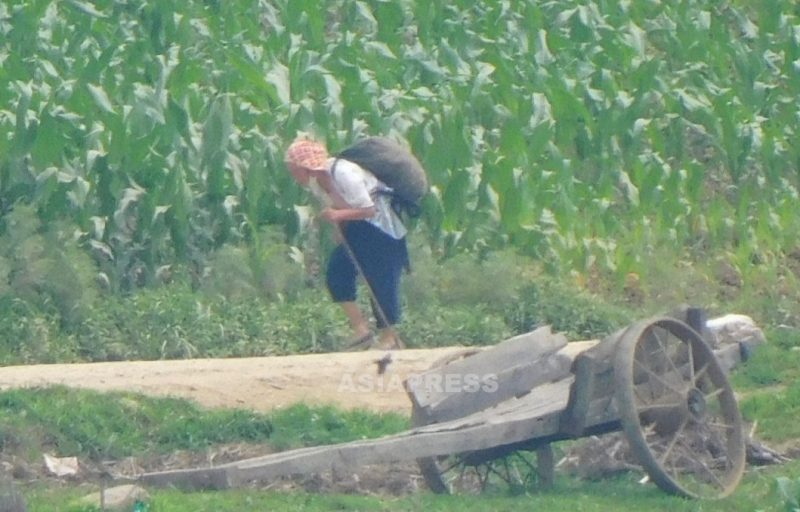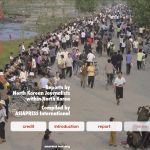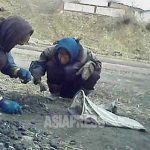
◆Why are farmers - the producers of the country - starving?
Currently, the people who are facing the most difficulty are North Korea’s food producers – the country’s farmers.
Over the past several years, ASIAPRESS has conducted field surveys of a collective farm in North Hamkyung Province. The farm will be referred to here as “Farm A.” The farm boasts about 500 farmers who mainly grow corn. Among farms in North Hamgyong Province, it is somewhat small in size.
At the collective farm, there are work groups that handle each type of crop, such as rice, corn, and vegetables, and under the work groups there are the subgroups that plant and harvest the crops. The subgroups currently consist of about 10-12 people.
Farm A’s crop yield decreased last year due to the lack of fertilizer. About 250 kg of corn was supposed to be distributed to each member of the subgroups, but only about 150-170 kg was distributed. Households that had consumed all the food they received began to appear as early as March.
Farm managers instructed each subgroup to investigate the extent of the lack of food and provide food to those that needed it. In past years, subgroups have survived these types of difficulties by stockpiling grains for the spring plight and prioritizing the distribution of this food to poor households during the fall harvest.
◆ The number of people living with one meal or less per day is increasing
However, this year, the government didn’t allow the farm to stockpile grain for its reserves. As a result, the grain was added to the production of crops handed over to the state, leaving no reserves at all. Therefore, in mid-March, each subgroup at the farm decided to collect 1.5 kg of corn per farmer and distribute this corn to food-insecure households.
In mid-April, when an ASIAPRESS collaborator revisited Farm A, the situation was even worse than before. The collaborator explained:
“In every subgroup, at least three of the (subgroup) members can only eat less than one meal a day. It's hard for people who are new to farms and are not used to life in rural areas or who are sick. It has become worse than it was in March.”
At the cooperative farms, "labor man-hours" are calculated based on the number of working days and the weight of work, and the distribution amount increases or decreases according to it. However, most households with fewer points due to illness, injury, and accidents eat up all the food that is distributed early.





![[Video Report] N.Korea Soldiers selling seaweed at a market](https://www.asiapress.org/rimjin-gang/wp-content/uploads/2018/07/20130819-00010001-asiapk-000-1-view-150x150.jpg)



















